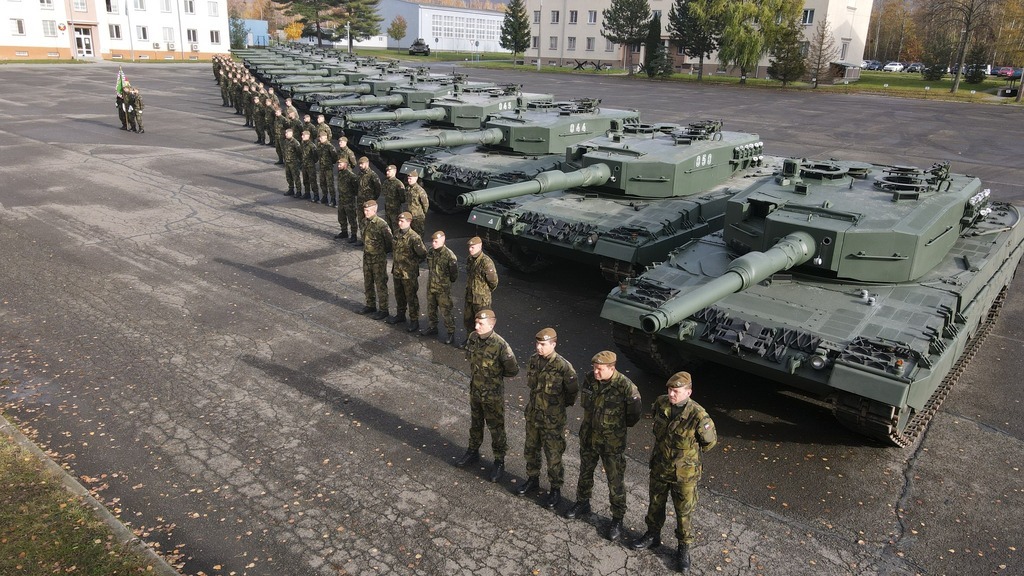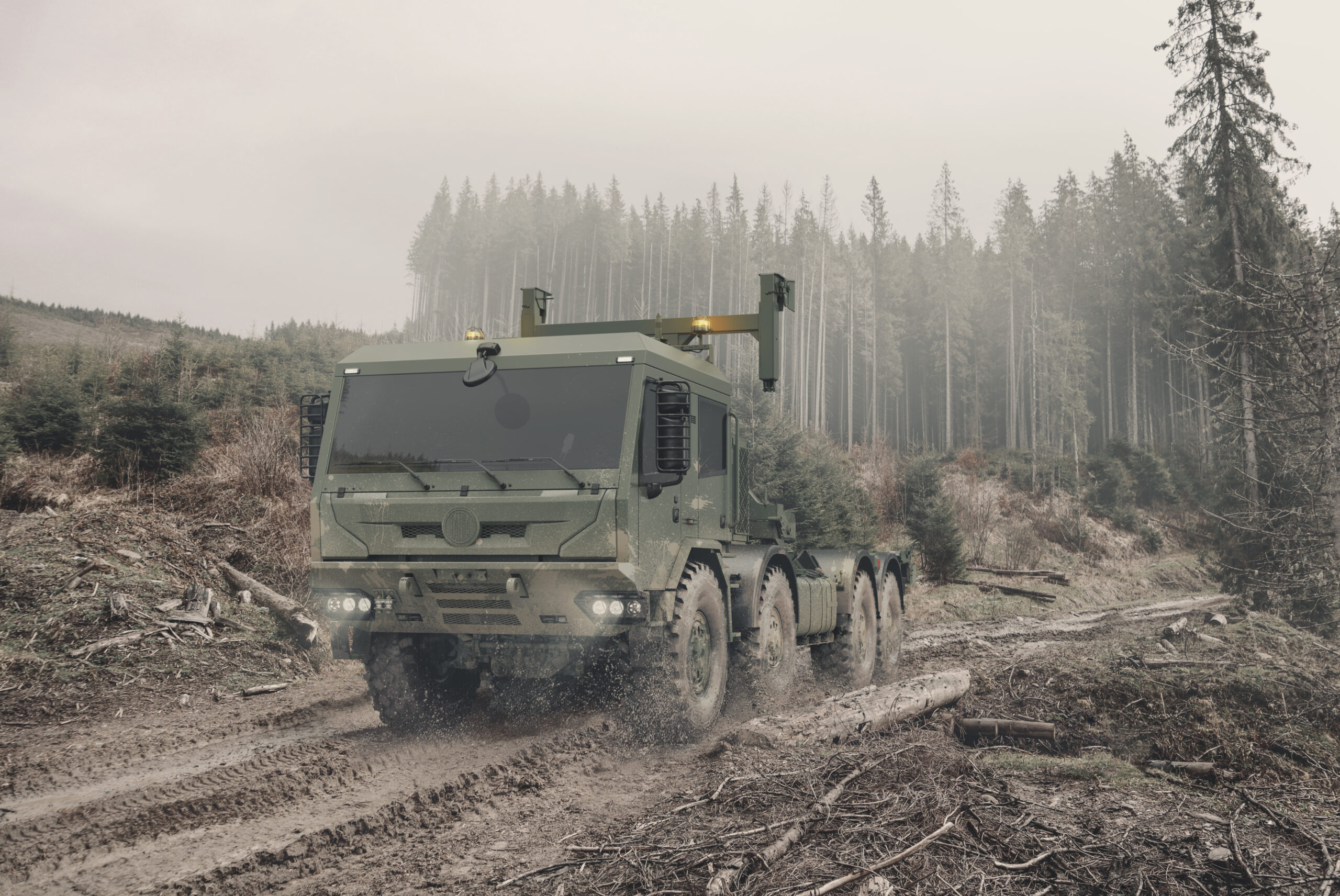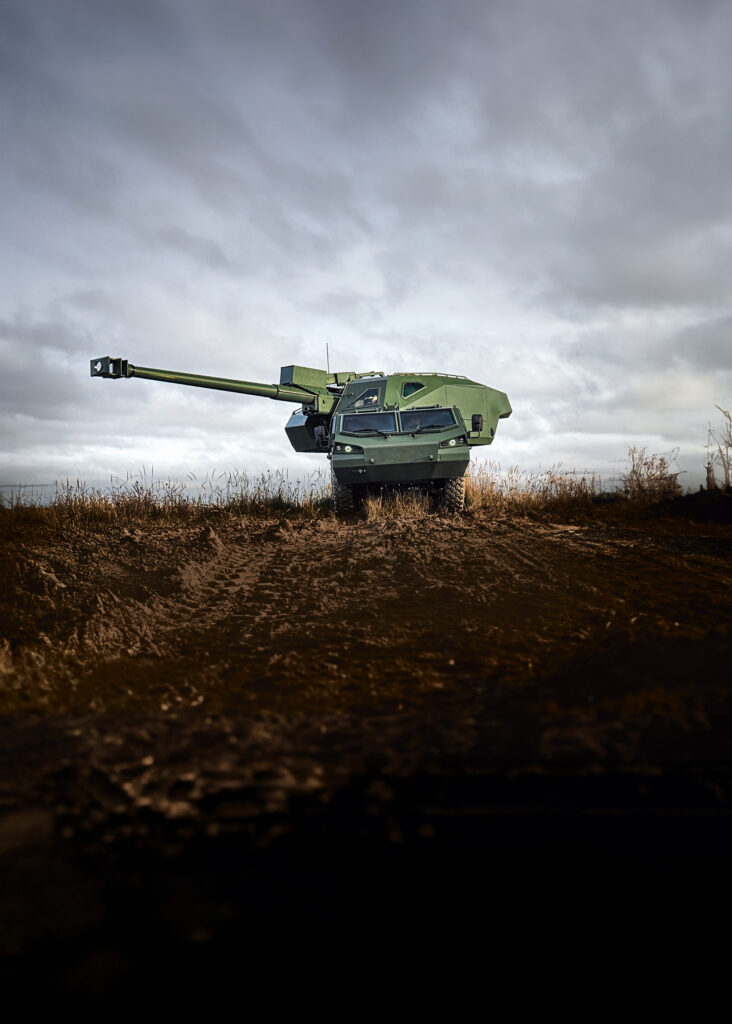The Czech defence industry is on the upswing: rising budgets, modernization
and growing exports are allowing the sector to flourish. However, a shortage of skilled workers, supply bottlenecks and geopolitical uncertainties also pose major
challenges.
The year 2025 marks a turning point for the Czech security and defense industry. This year, the Czech Republic will reach the promised defense spending of defense spending of two percent of the gross domestic product (GDP) and in combination with the increasing defense budgets in most other European countries – especially in response to the war in Ukraine (-> Latest news from the war in Ukraine) – opens up considerable potential for local companies to develop production, innovation and exports.
However, the sector is carrying a heavy burden from previous underfunding, and experts agree that defence spending needs to rise well above two percent in order to drive forward the complete modernization of the army – and to allow the sector to grow sustainably. In the past three years, defense spending amounted to around 16.1 billion euros.
The government is currently accelerating the Czech army’s modernization projects – in addition to F-35 fighter jets also Leopard 2A8 main battle tanks and CV90 infantry fighting vehicles – and is also promoting greater involvement of domestic companies through offsets and international partnerships.
Particular attention is being paid to building strategic self-sufficiency – especially in the production of ammunition and critical components. Nevertheless, manufacturers are facing challenges such as a shortage of raw materials – smokeless powder and nitrocellulose come to mind – limited capacities and increasing pressure to innovate, ranging from Industry 4.0 to space and cyber security technologies.
Northrop Grumman und USAF: Bereits 40 B-21 Bomber in Produktion?
From pre-war Czechoslovakia to the current boom
The Czech defense industry is continuing the rich tradition of the pre-war period. In the 1930s, the then Czechoslovakia was one of the leading European manufacturers of artillery systems, infantry weapons, ammunition and aircraft. More than 70,000 people were employed in the sector at the time, with companies such as Škoda-Werke, Zbrojovka Brno, Aero Vodochody and Tatra were world-famous, and the sector accounted for around 20 percent of the country’s total industrial exports.
During the Cold War, within the framework of the Council for Mutual Economic Assistance (CMEA), Czechoslovakian companies then concentrated on the mass production of military technology for the Eastern Bloc. At the end of the 1980s, the sector employed around 100,000 people and the annual production volume amounted to several billion euros.
 National procurement plans: For the first time in 20 years, the Czech Republic achieved the NATO target of spending at least two percent of its gross domestic product (GDP) on defense in 2024. This means that around 6.6 billion euros were spent on the armed forces in 2024 – including the purchase of new Leopard main battle tanks.
National procurement plans: For the first time in 20 years, the Czech Republic achieved the NATO target of spending at least two percent of its gross domestic product (GDP) on defense in 2024. This means that around 6.6 billion euros were spent on the armed forces in 2024 – including the purchase of new Leopard main battle tanks.
However, after the political system change at the end of 1989 (“Velvet Revolution”), the industry underwent restructuring and far-reaching transformations. Many companies had to close or were privatized. Only gradually did the industry then adopt the standards of NATOstandards after the Czech Republic joined the alliance in 1999. Newly founded private holdings such as the Czechoslovak Group, Omnipol and later the Colt CZ Group gradually consolidated the industry.
A decisive turning point was the Russian annexation of Crimea in 2014 and the subsequent invasion of Ukraine in 2022. As a result, defence spending increased across Europe – and Czech companies were able to meet the rising demand thanks to their tradition, the modernization measures they had already implemented and their ability to react flexibly to new challenges. Many companies ramped up production and were able to land extensive export orders.
Magni-X – das neue fliegende Auge des Bundesheeres
Strong impetus: modernization, order growth and innovation
The ongoing modernization of the Czech armed forces is giving the industry even more tailwind. Czech armed forces. The introduction of Leopard 2A8 tanks and CV90 infantry fighting vehicles and the acquisition of F-35 fighter jets are creating new opportunities. Companies such as Tatra Trucks (wheeled vehicles) and Excalibur Army (modernization of T-72EA tanks) are benefiting from the increasing demand for national cooperation. The government is also specifically promoting links between industry, universities and research institutes. The aim is to establish practice-oriented study programs and innovative research that meet the requirements of the modern defence industry.
 Important industry player: Adam Drnek is Managing Director of the Future Forces Forum in Prague.
Important industry player: Adam Drnek is Managing Director of the Future Forces Forum in Prague.
The war in Ukraine has also highlighted the immense importance of ammunition – from artillery to tank and small-caliber ammunition. Companies such as CSG Ammo+ (part of the Czechoslovak Group), STV Group and Sellier & Bellot (owned by the Colt CZ Group since 2024) are therefore currently increasing their production capacities considerably and introducing continuous shift operations. In order to remedy the shortage of strategic raw materials such as smokeless powder and nitrocellulose, the Czechoslovak Group has taken over a plant in Walsrode, Lower Saxony. And the RSBC Investment Group even secured a large piece of red-white-red industrial history last year. Group took over 100 percent of weapons manufacturer Steyr Arms from SMH Holding and now wants to expand with the company, particularly in the European and US markets, as the previous managing director and current strategic manager Tim Castagne emphasizes to Militär Aktuell.
Milan Šlapák (-> Interview in Militär Aktuell: “We are concentrating on defense”), CEO of the RSBC Group and successor to Tim Castagne, emphasized at the time of the takeover: “The acquisition of Steyr Arms is a unique opportunity. We are proud to be involved in the further development of the company. Steyr Arms has an exceptional product portfolio, particularly in the area of hunting and sporting firearms under the Steyr-Mannlicher name, as well as long guns for the military and police.”
“i see great potential in many areas
for czech companies.”
Adam Drnek, Geschäftsführer des Future Forces Forum in Prag Research, innovation and digitalization
However, production is also being ramped up in other areas, with the PBS Group recently increasing the production of its jet engines, particularly for unmanned aerial vehicles (UAV). With an export share of 25 percent to North America and 15 percent to Asia, the company plays a key role on the international market and aircraft manufacturer Aero Vodochody is also benefiting from the upgrade in the West.
The company sells the L-39NG Skyfox, currently one of the most sought-after jet trainers in the world (the Austrian Armed Forces recently decided against the L-39NG in favor of the M-346FA from the Italian manufacturer Leonardo) and is increasingly integrating Industry 4.0 technologies into production. This means that Aero Vodochody is also playing an increasingly important role as a supplier for the major players in the industry – for example with the production of slats for Airbus or with the production of various components for the transport aircraft Embraer C-390 Millennium, which is currently also used by the Austrian Armed Forces (-> Embraer starts construction of the first C-390M for the Austrian Armed Forces) and the Czech armed forces.
 Trucks from the Czech manufacturer Tatra are known above all for their off-road capabilities.
Trucks from the Czech manufacturer Tatra are known above all for their off-road capabilities.
Cyber technologies, electronic warfare systems and space are also becoming increasingly important in Czech industry. In these areas, several local companies see promising opportunities to become involved in European (EDF) and NATO projects and to further expand their position in the international defence industry, as Adam Drnek, Managing Director and Partner of the Future Forces Forum in Prague, also emphasizes to Militär Aktuell: “Especially in the areas of cyber and space technologies, command and communication systems as well as
radar and reconnaissance systems, I see great potential for Czech companies. The current conflicts and threats also highlight the need to strengthen resilience to hybrid attacks and independence from strategic raw materials.” Adam Drnek continues: “Modern technologies and sufficient in-house production in key areas are therefore essential.”
International cooperation and offsets
Offsets for the F-35 have also recently moved on – at the IDET in Brno, manufacturer Lockheed Martin recently announced new partnerships with Aero Vodochody, VZLU Aerospace and Vrgineers) and Czech companies are increasingly succeeding in establishing alternative cooperation models. Successful contracts with Embraer (Aero Vodochody) and subcontracts for leading Western companies are evidence of this development.
Speaking of Aero Vodochody: although the aircraft manufacturer based near Prague was not successful with its L-39NG in Austria, it is supplying the jet trainer to Hungary (-> First Hungarian L-39NG pilots ready to fly) and Vietnam. The Czechoslovak Group (CSG) is in turn expanding its international presence through strategic acquisitions, including the Kinetic Group in the USA and the aforementioned chemical plant in Walsrode, which improves access to American and European markets. And the Colt CZ Group is using the world-famous Colt brand name (founded in 1855) and the traditional Czech brand Sellier & Bellot (founded in 1825) to further strengthen its position in key markets in the USA and Europe.
 One important representative of the Czech defense industry is the aircraft manufacturer Aero Vodochody – the company sold six of its L-39NG jet trainers to Vietnam. Challenges: Raw materials, personnel and strategic capacities
One important representative of the Czech defense industry is the aircraft manufacturer Aero Vodochody – the company sold six of its L-39NG jet trainers to Vietnam. Challenges: Raw materials, personnel and strategic capacities
Despite all the positive developments, the Czech arms industry is also struggling with a number of problems. In addition to the aforementioned difficult supply of strategic materials such as smokeless powder and nitrocellulose, there is a shortage of skilled workers everywhere. Companies often search in vain for mechanical engineers, chemists and IT specialists. In order to attract the urgently needed skilled workers, the industry is stepping up its collaboration with universities and increasing investment in scholarship programs.
Successful expansion: the Czechoslovak Group as market leader
The Czechoslovak Group (CSG) is the largest player in the Czech defense industry in terms of turnover and exports. In the third quarter of 2024, the group achieved a turnover of 2.52 billion euros, which corresponds to a steep increase of 129 percent compared to the same period in 2023. Michal Strnad, owner and CEO, explains: “The year 2024 not only brought significant economic progress for the CSG Group, but also our largest acquisition in the USA to date. Although the geopolitical situation is increasing the demand for defense equipment, I see the main reason for our success in the determination and dynamism of our team, which makes us a strong global player.”
„Königgrätz war ein Wendepunkt – nicht nur für Preußen und Österreich“
CSG focuses on the modernization of T-72EA tanks, the development of artillery systems (Dita), armoured platforms (Tadeas and Morana) and the production of ammunition (CSG Ammo+).
Long-term prospects
Based on all these developments, the Czech security and defense industry will be facing a new phase of growth in 2025. Adam Drnek from the Future Forces Forum concludes: “The current conflicts and new types of threats highlight the importance of modernization and resilience to hybrid attacks. With a focus on modern technologies and strategic in-house production, the Czech defense industry can further consolidate its position as a respected and technologically advanced partner within NATO and on global markets.”
Click here for further articles on business & industry.


